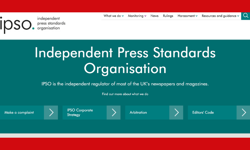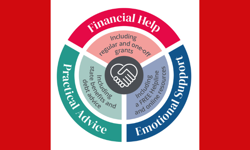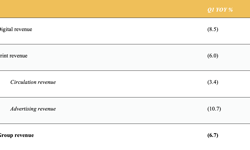Any one who has read Bill Bryson’s A Short History of Nearly Everything will be stunned by the scientific intricacy of the world we live in. He valiantly attempted to explain it all in simple language but even he had to buckle under the sheer weight of technical terms and acronyms from time to time. Nevertheless he stuck at it and wrote a great book.
So what’s the next big challenge for Bill Bryson? I suggest he tries to get his head around the complexity of the UK evening newspaper market. It’s not quite as daunting as Einstein’s Special Theory of Relativity but there are plenty of black holes to delve into.
On the face of it, the main issue is relatively simple. Probably even the much travelled and incredibly well-read Bill reads a newspaper less often these days as there’s more and more media and leisure choice. The evening newspaper market, as a whole, is losing copy sales at a rate of around 5% per annum as fewer people can find either the time or motivation to sit down with a paper every day. That’s just the way it is.
However, every now and then, a few bright stars appear that seem to contradict conventional theories. Why is it that some evening newspapers have performed consistently better than others over a number of years? What are their critical success factors and can the rest of the industry learn from them?
Ever keen to know more, we set out to answer these questions by surveying the top 20 evening newspapers in the country – success was defined as ABC sales increase/decrease over a five year period, comparing average July to December circulation for 2004 versus 2000. Ranked in order of performance the titles we surveyed are shown in the table. Apologies if we have missed anyone off the list, as I’m sure had we chosen a different time scale or ABC periods one or two titles would have swapped places. Unfortunately, the Norwich Evening News has not made the list - yet.
| The Top 20 Evening Newspapers | |||
| Title | 2000 | 2004 | Variance |
| Weymouth – Dorset Evening Echo | 20,891 | 21,507 | 2.9% |
| Guernsey Evening Press & Star | 16,013 | 16,291 | 1.7% |
| Carlisle – News & Star Group | 25,197 | 25,540 | 1.4% |
| Newport – South Wales Argus | 30,707 | 30,788 | 0.3% |
| Barrow – North West Evening Mail | 20,406 | 19,752 | -3.2% |
| The Gazette – Blackpool | 36,334 | 34,890 | -4.0% |
| Jersey Evening Post | 23,034 | 22,037 | -4.3% |
| Scunthorpe Telegraph | 23,469 | 22,432 | -4.4% |
| Greenock Telegraph | 19,708 | 18,806 | -4.6% |
| Teesside – Evening Gazette | 61,557 | 58,446 | -5.1% |
| Gloucestershire Echo | 24,686 | 23,419 | -5.1% |
| Grimsby Evening Telegraph | 42,316 | 39,681 | -6.2% |
| Swansea – South Wales Evening Post | 60,946 | 56,487 | -7.3% |
| Colchester – Evening Gazette | 28,300 | 26,179 | -7.5% |
| South Shields – Shields Gazette | 22,674 | 20,967 | -7.5% |
| Torquay – Herald Express | 28,476 | 26,095 | -8.4% |
| The Evening Echo Group (Southend) | 41,594 | 38,081 | -8.4% |
| Aberdeen – Evening Express | 63,376 | 57,893 | -8.7% |
| Shropshire Star | 87,831 | 79,460 | -9.5% |
| Swindon – Evening Advertiser | 25,753 | 23,204 | -9.9% |
The first thing to note about these titles is that only four have seen any growth in circulation over the five-year period. Hats off to the Dorset Evening Echo, Guernsey Evening Press and Star, Carlisle Evening News and the South Wales Argus.
No morning rival
The second point of note is that none of the top 20 publish a competitive sister morning title. This is particularly interesting to us as the Norwich Evening News shares the same market space as the Eastern Daily Press, the biggest selling regional morning newspaper in England and one of the sector’s best performers.
Our 2005 readership research revealed that 26% of average issue readers of the Evening News are also average issue readers of the EDP. So, as the Eastern Daily Press sells around 11,000 copies in Norwich there are probably around 7,000 people living in the city who are buying the EDP rather than the Evening News.
Our conclusion is that this just makes it more difficult for any evening newspaper with a sister morning title to make the top 20.
So that’s excuse number one out of the way – are there any other reasons why these newspapers do relatively well? Let’s return to the survey.
We felt our research should be as scientific as possible so it was made up of three elements: desk research, an e-mail questionnaire and a structured telephone interview.
Desk research
The desk research concentrated on profiling the area demographics and readership of each title, as well as plotting half year ABCs from 2000 to 2004. The sales graphs for one or two titles resembled the Himalayas, which suggests that the timing of either bulk sales or canvassing activity produced the peaks each year.
One or two also had the odd peak generally related to major product development or big local news events.
In terms of area demographics and readership profile, the most striking finding was that they generally mirrored each other. In other words all of the top 20 titles had a similar readership profile to the area they served, apart from a readership bias towards C2DE socio demographic groups (although using socio demographics as a discriminator is becoming less meaningful these days).
Surprisingly, for the majority of titles, the age and sex profile of readers was virtually the same as the area – the significance of this is that the top performers generally appeal to the elusive under 35s, which is not regarded as the norm for an evening newspaper.
Questionnaires
Desk research can only reveal so much, so the next phase was to contact the chief marketing and circulation honcho at each centre and ask them nicely to take part in our e-mail survey. All were happy to do so and the results that follow are based on 16 responses.
We asked them to score 35 different success factors on how important they had been to their title’s success. They had to award 1 point for not important at all up to 10 points for absolutely crucial.
The factors covered editorial, newspaper sales and marketing and included things like advertising, promotions, direct delivery, merchandising, billing, supplements, product development and local campaigns to name but a few.
Guess what came out on top? Scoring a massive 9.2 out of 10 was "getting the paper out on time"! Obviously, all the titles, at some point in their history had suffered from production and delivery difficulties, a subject pretty close to our own hearts at the moment, so the importance of consistent on-time distribution was paramount.
Including On Time Distribution there were 13 factors that scored 7 points or over (see table below).
| Top scoring success factors | |
| Success factor | Score (out of 10) |
| On time distribution | 9.2 |
| Managing supply | 8.7 |
| Working with supermarkets | 8.2 |
| Local campaigns – community initiatives | 8.0 |
| Continuous product development | 7.9 |
| Working with newsagents | 7.6 |
| Newsagent’s customer service | 7.5 |
| Developing alternative outlets/businesses | 7.4 |
| Direct Home Delivery | 7.4 |
| Canvassing | 7.1 |
| Managing key accounts | 7.1 |
| Consistently good print quality | 7.0 |
| Building a customer database | 7.0 |
The only factors to score 7 or more from the consumer marketing list were Canvassing (this is really a form of direct marketing) and Building A Customer Database. At the other end of the scale Radio and TV Advertising scored 3 and 1 respectively, which, for a fast moving consumer good, is unusual.
Reader Offers, Loyalty Schemes, Consumer Research, Events, Promotions and PR all scored between 5 and 6.
We also asked which factors would become more important over the next three years and Canvassing, Customer Databases, Loyalty Schemes (all three are inter-related), Consumer Research, PR and Outdoor Advertising will all attract additional marketing investment.
It was good to see that the quality of the editorial product scored highly (it would have been pretty scary if it hadn’t) and I’m sure editors may well have rated editorial factors even higher, and rightly so.
It seems the more successful papers put a lot of effort into supporting their local communities as well as continuously innovating – the key word here is continuous product development. Good print quality (just like on time delivery) is a critical hygiene factor that is really the least a customer should expect. It’s also a common reason for cancellation if it goes wrong.
Earlier Print Times and Added Value Supplements scored between 5 and 6 and both of these, together with Local Campaigns, Product Development and Design Changes, will become more important in the short to medium-term.
Over half of the factors critical to an evening newspaper’s success were, however, to do with newspaper sales and circulation best practice.
Trade marketing – working with supermarkets, newsagents and managing key accounts – vied for top spot with Supply Management as the main priority for the newspaper sales team. Interestingly, supermarkets are seen to be as important as newsagents.
Curiously, trade marketing activities share top billing with Developing Alternative Outlets and Direct Home Delivery as newspapers attempt to widen the distribution network and build direct relationships with readers. The trick is to ensure both these complement more traditional newspaper sales activities as the top performers still depend heavily on maintaining excellent working relationships with the retail trade.
Over the next three years, as well as the activities listed above, the importance of Retail Sales Promotions (score 6.8), Billing (score 6.6), Street Vending (score 6.5) and Merchandising (score 6.5) will increase. On the other hand, both Bulk Sales and Special Editions (both scored less than 2) have seen their day, as actively purchased becomes the favoured ABC measure of sales performance.
Phew, that’s the statistics out of the way. What did the telephone interviews reveal?
Telephone interviews
Basically more of the same, except that, in addition to the factors highlighted above, the top 20 evening titles more often than not tailored their content to a female audience, particularly where the demographic make up of the area was also female biased.
Thriving evening newspapers also fell into one of two camps: either they covered an area with a booming economy and strong local communities or the local economy was on the rocks and hard news, particularly crime, set the news agenda. There seemed to be no middle ground – I wonder which one advertisers prefer?
As far as the Norwich Evening News is concerned, the presence of the EDP, distribution difficulties and inconsistent print quality are all holding the title back at present. But that’s enough of the excuses – we can already tick quite a few of the important editorial, newspaper sales and marketing boxes.
The research has highlighted a number of factors that we could either improve or introduce and these are being built into our short to medium-term plans. Hopefully, in the foreseeable future we will have risen up the league table and somebody will be phoning us up to ask how we did it.
And Bill Bryson, who has recently set up home near Norwich, may become a regular home delivered customer, a member of our loyalty scheme and attend our reader events … he may even go on the odd reader holiday (well, maybe not).










